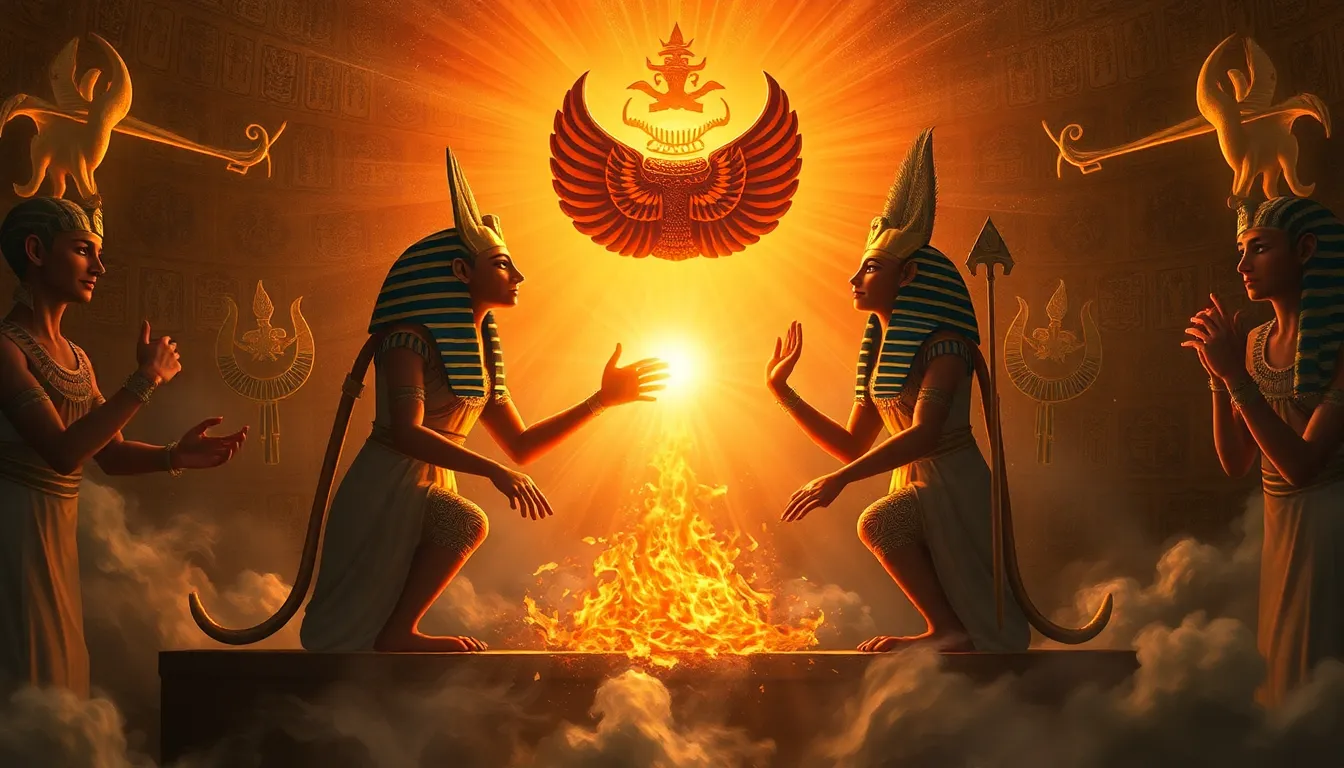The Role of Ma’at in Egyptian Creation Myths: Harmony in Chaos
I. Introduction
Egyptian mythology is a rich tapestry of stories that explain the origins of the world, the gods, and humanity itself. Central to these narratives is the concept of Ma’at, which embodies the principles of truth, balance, and cosmic order. As a foundational element in the Egyptian worldview, Ma’at plays a crucial role in navigating the chaotic waters of creation myths. This article explores how Ma’at represents harmony amidst chaos, emphasizing her significance in the ancient Egyptian understanding of the universe.
II. Understanding Ma’at: The Concept and Symbol
Ma’at is more than just a goddess; she is a fundamental concept that defines the very essence of order and truth in the universe. Her attributes can be summarized as follows:
- Truth
- Balance
- Cosmic Order
- Justice
As a goddess, Ma’at is often depicted as a woman with an ostrich feather on her head, symbolizing truth and balance. This feather becomes a critical element in the judgment of souls in the afterlife, weighing against the heart of the deceased to determine their fate.
In ancient Egyptian art, Ma’at is frequently shown alongside other deities, reinforcing her integral role in the cosmic order and the maintenance of harmony within the universe.
III. The Chaos Before Creation: Nu and the Primordial Waters
Before creation, there existed Nu, the primordial waters of chaos. Nu represents the formless, chaotic state of existence where no land, life, or order could be discerned. This concept of chaos is essential in Egyptian cosmology, as it highlights the potential for creation that lies within disorder.
In the Egyptian worldview, chaos is not merely a negative force; it is a necessary precursor to order. The emergence of creation from Nu signifies the transition from chaos to the structured world governed by the principles of Ma’at.
IV. Creation Myths Featuring Ma’at
A. The Heliopolitan Creation Myth
The Heliopolitan creation myth centers around Atum, who emerges from the waters of Nu and begins the process of creation. Atum’s self-creation leads to the birth of the first gods, who help shape the world. In this narrative, Ma’at is introduced as the guiding principle that ensures the newly created world remains in harmony.
B. The Memphite Creation Myth
In the Memphite creation myth, Ptah is the creator god who brings forth the universe through the power of his heart and speech. Here, Ma’at plays a vital role in the process, representing the order and stability that follows creation. Through Ptah’s actions, Ma’at is established as a foundation for the cosmos, ensuring that everything created adheres to the principles of balance and truth.
V. Ma’at’s Influence on Divine Order and Kingship
The principle of Ma’at extends beyond mythology into the realm of governance and divine order. The pharaohs of Egypt were seen as the earthly embodiments of Ma’at, tasked with upholding her principles to maintain order in society.
- Pharaohs were considered the mediators between the gods and the people.
- They were responsible for enacting laws that aligned with the principles of Ma’at.
- Rituals performed by pharaohs were aimed at ensuring the favor of the gods and the continued stability of the cosmos.
Examples of Ma’at’s influence can be seen in the legal codes and ethical standards that governed daily life in ancient Egypt, highlighting her lasting impact on the civilization.
VI. The Balance of Ma’at in Daily Life and Religion
The principles of Ma’at permeated every aspect of Egyptian life, shaping moral values and ethical behavior. Her impact can be observed in various ways:
- Ma’at provided a framework for morality, dictating what was right and just.
- Rituals and practices, such as daily offerings and ceremonies, were conducted to honor Ma’at and maintain harmony with the divine.
- In the afterlife, the weighing of the heart against Ma’at’s feather determined one’s fate, reinforcing the importance of living in accordance with her principles.
VII. Ma’at and the Interplay of Chaos and Order
The dynamic relationship between chaos and harmony is a recurring theme in Egyptian mythology. Myths illustrate the necessity of both elements for creation and survival. Without chaos, there would be no potential for growth or change, and without order, there would be no stability or peace.
Modern interpretations of Ma’at often draw parallels to chaos theory, emphasizing how systems can emerge from disorder and evolve into complex structures. This interplay remains relevant in contemporary discussions about balance and harmony in our own lives.
VIII. Conclusion
In summary, Ma’at serves as a pivotal figure in Egyptian creation myths, representing the principles of harmony and balance that counteract chaos. Her influence extends from mythology into the realms of governance, ethics, and daily life, illustrating her significance in ancient Egyptian culture. The legacy of Ma’at continues to resonate today, reminding us of the importance of maintaining balance and seeking truth in a world often filled with chaos.
As we reflect on the teachings of Ma’at, we find valuable lessons that remain relevant in contemporary discussions about order, chaos, and the pursuit of harmony in our lives.




